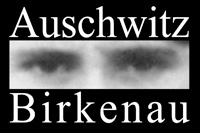




Reports by escapees
In 1944, three reports by Auschwitz escapees reached international organizations and the Allied governments. The escapees were the Pole Jerzy Tabeau and the Jews Rudolf Vrba and Alfred Wetzler, as well as Czesław Mordowicz and Arnošt Rosin.
Tabeau escaped in November 1943. Afterwards, he wrote a report on the events he witnessed in the camp from the spring of 1942. He described the living conditions, methods of killing prisoners, and the procedures used in the extermination of the Jews. The Polish underground sent this document to the West through secret channels.
Rudolf Vrba and Alfred Wetzler escaped from the camp in April 1944. Their accounts were sent to the West through secret channels, and revealed in the media. Under their influence, Allied and neutral governments began pressuring Hungarian authorities to stop further deportation of Jews to Auschwitz (Sonderaktion “Ungarn”). Relenting under pressure, Regent Miklós Horthy did so in July 1944.
Czesław Mordowicz and Arnošt Rosin escaped from Auschwitz in May 1944. Their account on the beginning of Sonderaktion “Ungarn” in Birkenau was presented to the Allied governments, the World Jewish Congress, and the International Committee of the Red Cross. It also made its way into the media.
In November 1944 the three reports were published in Washington in a brochure titled German Extermination Camps—Auschwitz and Birkenau. The information it contained was publicized by the press and radio, and contributed to awareness in the West of the crimes the Germans were committing in Auschwitz, and especially the extermination of Jews.
